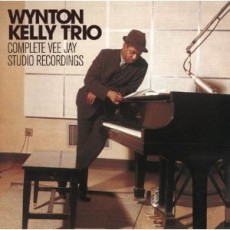
Daily Dose Of Jazz…
Wynton Kelly was born December 2, 1931 in Jamaica but grew up in Brooklyn, New York from age four when his parents emigrated to the United States. He started playing piano professionally as a teenager in R&B groups led by Eddie “Cleanhead” Vinson and Eddie “Lockjaw” Davis, then went on to work with Lee Abrams, Cecil Payne, Dinah Washington and Dizzy Gillespie.
Kelly recorded fourteen titles for Blue Note with a trio in 1951, worked with Dinah Washington, Dizzy Gillespie, and Lester Young during 1951-1952 followed by serving in the military. After his discharge he again worked with Washington, Charles Mingus and the Dizzy Gillespie big band but he would be most famous for his stint in the late 50s with the Miles Davis Quintet from 1959 – 63 and was part of the seminal “Kind Of Blue” replacing Bill Evans on “Freddie Freeloader”, along with notable albums “At The Blackhawk” and “Someday My Prince Will Come”. He would later replace Tommy Flanagan on the “Naima” on Coltrane’s “Giant Steps”.
Wynton left Davis in 1963 and took the rest of the rhythm section bassist Paul Chambers and drummer Jimmy Cobb with him to form his trio. He recorded as a leader for Blue Note, Riverside, Vee-Jay, Verve and Milestone.
Pianist Wynton Kelly passed away on April 12, 1971 in Toronto, Ontario, Canada of an epileptic seizure. At 39, he was one of the most prolific sideman pianists of his era, performing on scores of jazz albums and a superb accompanist and distinctive soloist who would decades later influence a new generation of jazz pianists.
More Posts: piano
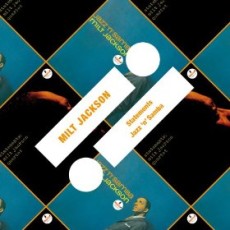
Daily Dose Of Jazz…
Milt Jackson was born Milton Jackson on January 1, 1923 in Detroit, Michigan. Discovered by Dizzy Gillespie and hired in 1946 for his sextet and also for his larger ensembles. He quickly acquired experience working with the most important figures in jazz of the era, including Woody Herman, Howard McGhee, Thelonious Monk and Charlie Parker.
In the Gillespie big band, Jackson fell into a pattern that led to the founding of the Modern Jazz Quartet. He was part of Gillespie’s small group swing tradition within a big band, consisting of pianist John Lewis, bassist Ray Brown and drummer Kenny Clarke. They would become a working group in their own right around 1950 and became the Milt Jackson Quartet but by the time Percy Heath replaced Ray Brown, in 1952 they became the Modern Jazz Quartet.
After some twenty years the MJQ disbanded in 1974 and Jackson pursued more money and his longed for improvisational freedom. The group reformed in 1981, however, and continued until 1993, after which Jackson toured alone, performing in various small combos, although agreeing to periodic MJQ reunions.
He recorded prolifically, his tunes, “Bluesology”, “Bags & Trane”, “The Late, Late Blues” and “Bag’s Groove” are jazz standards. He has recorded with J.J. Johnson, Roy McCurdy, B.B. King, John Coltrane, Wes Montgomery, Hank Mobley, Oscar Peterson, Stanley Turrentine, Don Sebesky, Cannonball Adderley and Ray Charles on the very short list.
A very expressive player, Bags, as he was affectionately known and referring to the bags under his eyes from staying up all night, differentiated himself from other vibraphonists in his attention to variations on harmonics and rhythm. He became one of the most significant vibist and was at the top of his game for 50 years playing bop, blues, and ballads with equal skill and sensitivity. Vibraphonist Milt Jackson, thought of as a bebop player but equally remembered for his cool swinging solos, left the jazz world on October 9, 1999 in Manhattan, New York.
More Posts: vibraphone
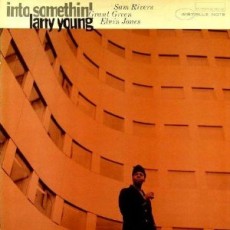
Daily Dose Of Jazz…
Larry Young was born on October 7, 1940 in Newark, New Jersey. He played the organ with various R&B bands in the 1950s before gaining jazz experience with Jimmy Forrest, Lou Donaldson, Kenny Dorham, Hank Mobley and Tommy Turrentine. He began recording as a leader for Prestige from 1960, making a number of soul-jazz discs, Testifying, Young Blues and Groove Street.
Larry moved to Blue Note in 1964, his music began to show the marked influence of John Coltrane and during this period, he produced his most enduring work. He recorded many times as part of a trio with guitarist Grant Green and drummer Elvin Jones. Into Somethin’ with saxophonist Sam Rivers became Young’s Blue Note debut, though 1965’s Unity remains his best-known album featuring Joe Henderson and a young Woody Shaw.
Young’s subsequent Blue Note albums like Contrasts, Of Love and Peace, Heaven On Earth and Mother Ship drew on elements of the ’60s avant-garde, and utilized local Newark musicians. He then became a part of some of the earliest fusion experiments: first in “Lifetime”, then “Emergency!” with Tony Williams and John McLaughlin, and also on Miles Davis’s Bitches Brew. Branching out, Larry was also known to rock fans for a jam he recorded with Jimi Hendrix on the album Nine to the Universe.
Organist Larry Young, also known as Khalid Yasin (Abdul Aziz), who pioneered a modal approach and whose characteristic sound involved management of the stops on the Hammond organ, producing overtone series that caused an ethereal, drifting effect; a sound that is simultaneously lead and background, passed away on March 30, 1978 in New York City.
More Posts: organ
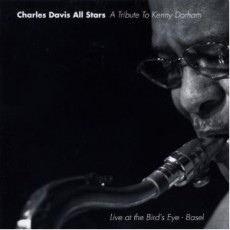
Daily Dose Of Jazz…
Charles Davis was born on May 20, 1933 in Mississippi but was raised in Chicago, Illinois. Graduating from DuSable High School he continued his musical study of the saxophone at the Chicago School of Music and privately under John Hauser. In the 1950s he played in the bands of Billie Holiday, Ben Webster, Dinah Washington and extensively with Sun Ra and Archie Shepp. He teamed up with Kenny Dorham, performing and recording for many years together.
An accomplished tenor and alto saxophonist, Charles was widely known for his baritone, winning Downbeat Magazine’s 1964 International Jazz Critics Poll for the baritone saxophone. Throughout his career he would perform in the musical production of “The Philosophy of The Spiritual – A Masque of the Black”, teach public school in Brooklyn, the Jazzmobile Workshop and at the New School, be the musical director of The Turntable, a nightclub owned by Lloyd Price, and tour Europe several times.
Davis would be a member of the cooperative group “Artistry in Music” with Hank Mobley, Cedar Walton, Sam Jones and Billy Higgins, and was the co-leader and composer/arranger for the Baritone Saxophone Retinue. His numerous collaborations, performances and recordings both as a leader and sideman with a who’s who of his contemporaries such as Elvin Jones, Jimmy Garrison, Illinois Jacquet, Freddie Hubbard, Johnny Griffin, Steve Lacy, Ahmad Jamal, Blue Mitchell, Erskine Hawkins, John Coltrane and Clifford Jordan among many others. Alto, tenor and baritone saxophonist Charles Davis continued to enjoy a prolific career until his passing on July 15, 2016.
More Posts: saxophone
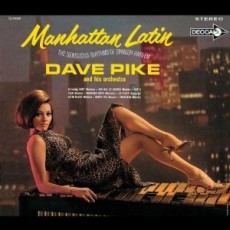
Daily Dose Of Jazz…
David Samuel Pike was born March 23, 1938 in Detroit, Michigan and learned drums at the age of eight and is self-taught on vibraphone. He made his recording debut with the Paul Bley Quartet in 1958. While working with flautist Herbie Mann in the early Sixties he began putting an amplifier on his vibe. By the late 1960s, Pike’s music became more exploratory, contributing a unique voice and new contexts that pushed the envelope in times remembered for their exploratory nature.
Dave’s release Doors of Perception produced by Mann in 1970 on Vortex Records explored ballads, modal territory, musique concrete, and free and lyrical improvisation. He has recorded as a leader and sideman with Lee Konitz, Chuck Israels, Herbie Mann, Bill Evans, Nick Brignola, and Kenny Clarke.
Pike’s move to Europe and his tenure at MPS Records produced some of the most original jazz of the period. He formed the Dave Pike Set and recorded six albums between 1969 and ’72 that ran the gamut from funky grooves to free, textural territory. The group, though short-lived, created a unique identity and textural palette.
Collaborating with Volker Kriegel during this period provided compositional and instrumental contributions to the group, playing acoustic, classical, and electric guitar as well as sitar, that helped set the Dave Pike Set’s sound apart, organically incorporating influences from jazz, soul jazz, psychedelia, avant-garde music, and World music. With 19 albums to his credit, vibraphonist Dave Pike continued exploring different realms of music until his passing away of lung emphysema on October 3, 2015 in del Mar, California.
More Posts: drums,marimba,vibraphone




